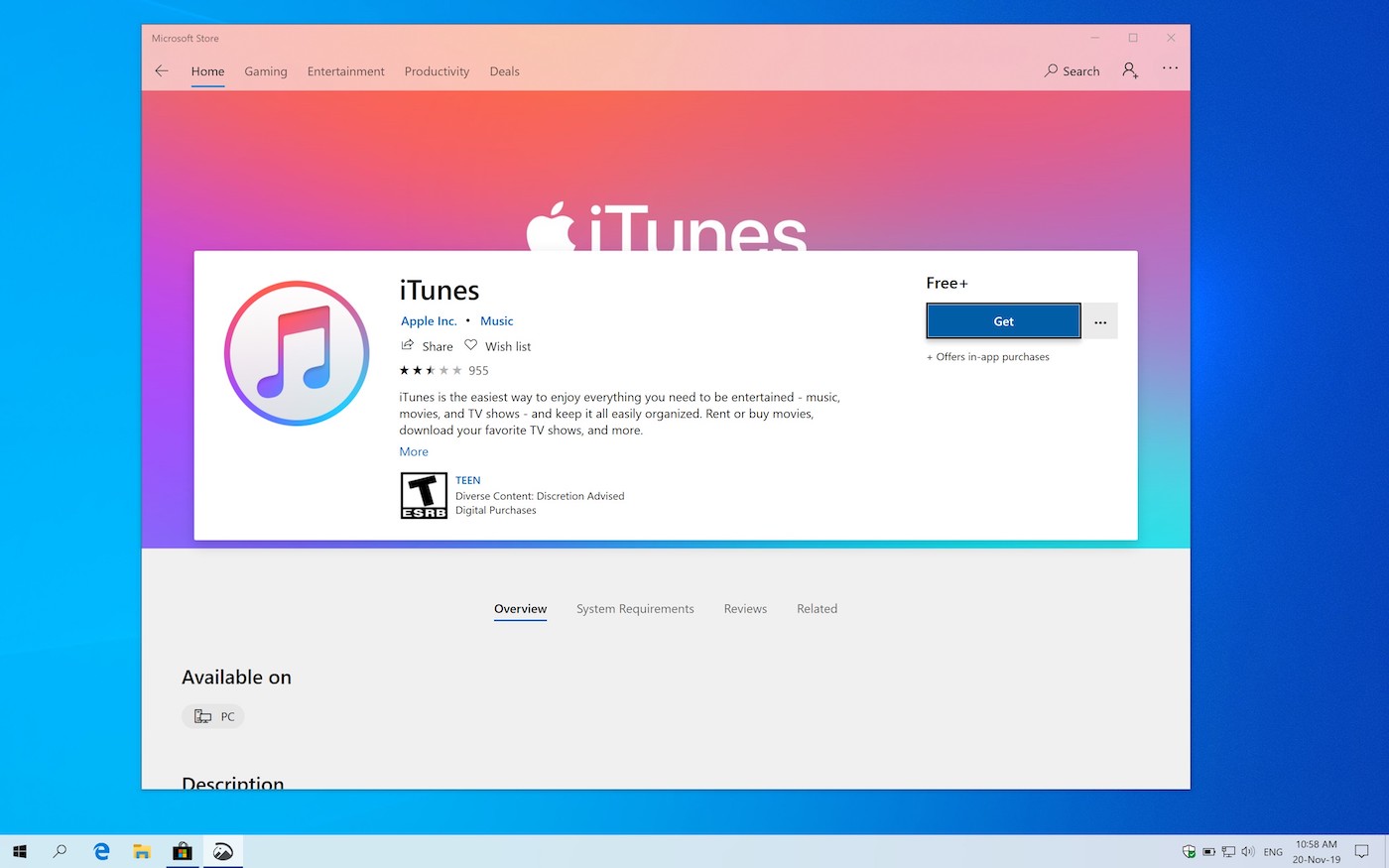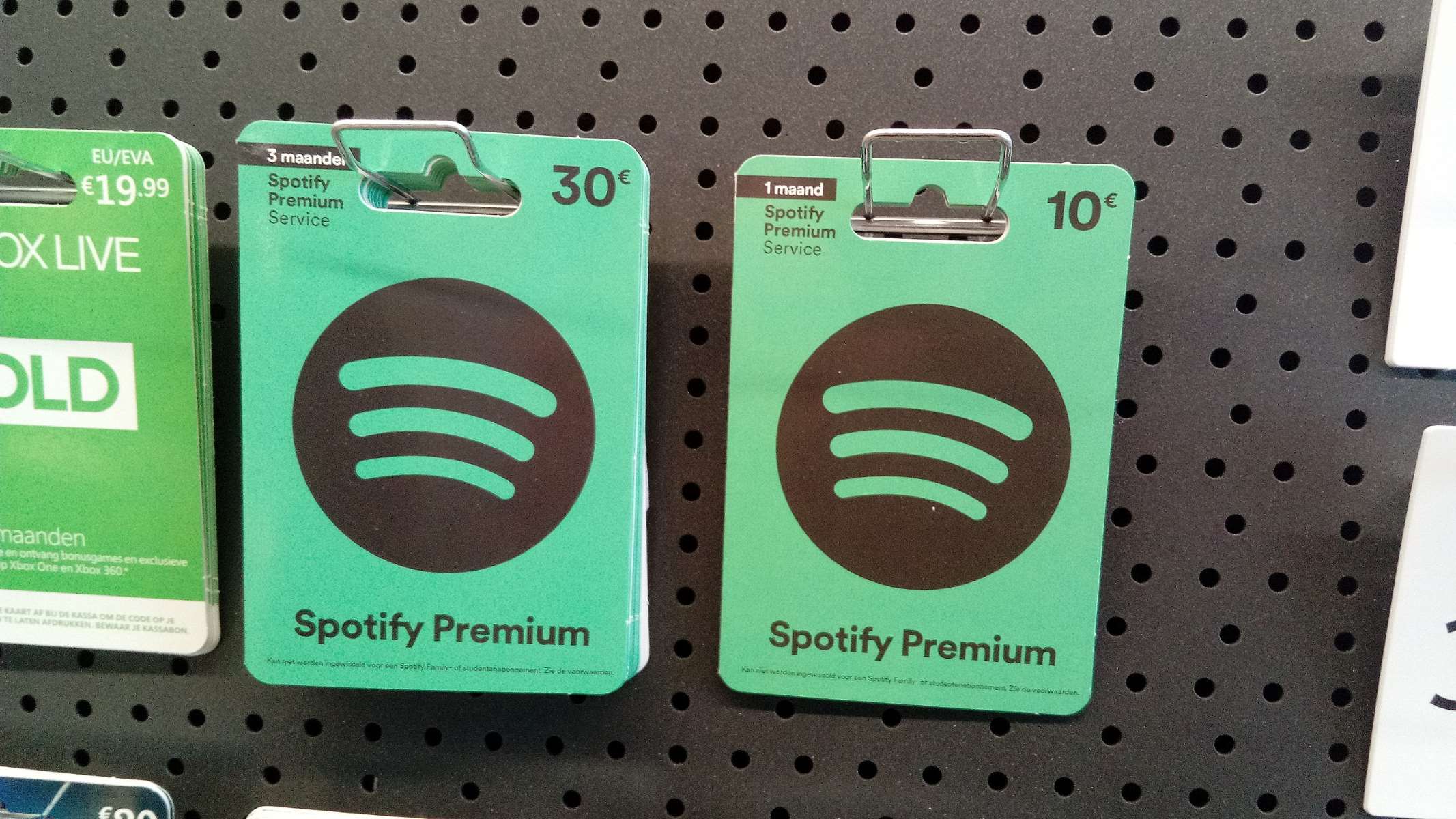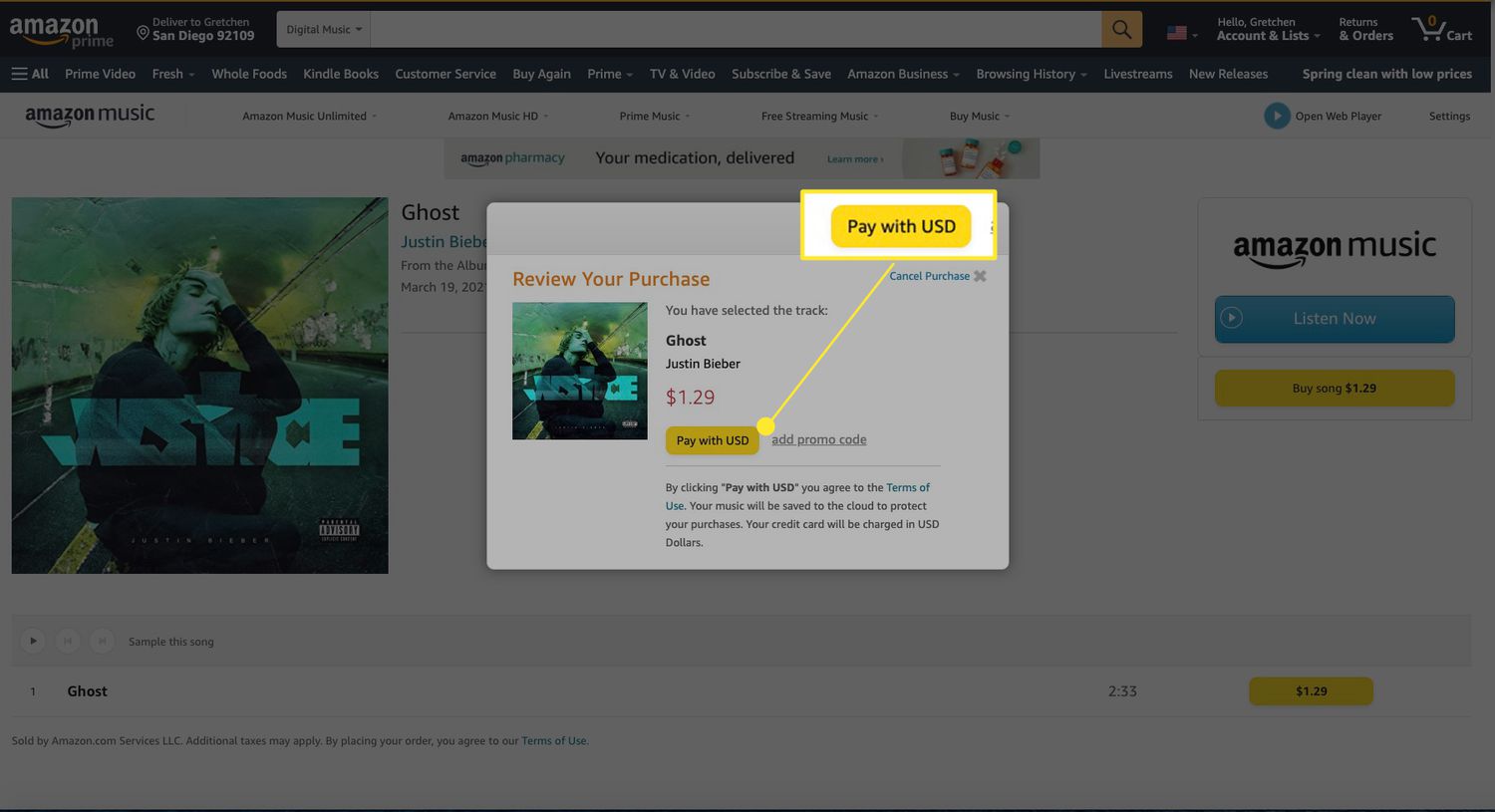Introduction
Welcome to the world of music downloads! In a digital era where convenience and accessibility reign supreme, purchasing music to download has become the go-to option for avid music enthusiasts. No more hauling around bulky CD cases or waiting for your favorite songs to play on the radio; with just a few clicks, you can instantly have your favorite music at your fingertips.
But with an overwhelming number of platforms and formats to choose from, it’s important to know how to navigate this digital terrain effectively. In this article, we’ll guide you through the process of buying music to download, ensuring that you have all the necessary information to make informed choices and build your digital music collection.
Before we dive into the details, it’s worth noting that the landscape of music downloads has significantly evolved over the years. While illegal downloading was once rampant, the rise of legal streaming services and online music stores has created a legitimate and user-friendly environment for purchasing and enjoying music.
Whether you’re a music aficionado looking to expand your collection or a casual listener on the hunt for the latest hits, this guide will equip you with the knowledge and tools to make the most of your music download experience. So, let’s delve into the world of music downloads and discover how to find, purchase, and enjoy your favorite tunes in a convenient and hassle-free way.
Choosing a Music Download Platform
With numerous music download platforms available, it’s important to choose one that offers a wide selection of music, a user-friendly interface, and secure payment options. Consider the following factors when deciding on the best platform for your music needs:
Music Catalog: Look for platforms that boast an extensive and diverse music catalog. Whether you enjoy mainstream hits, independent artists, or niche genres, a platform with a vast selection will ensure you can find the music you love.
User Experience: A well-designed and intuitive interface can greatly enhance your music downloading experience. Look for platforms that offer easy navigation, clear search functionality, and personalized recommendations to help you discover new music.
Quality and Formats: Ensure that the platform offers high-quality audio formats, such as MP3 or FLAC, and allows you to download music in your preferred format. Some platforms may also provide options for lossless audio, giving you the best sound quality possible.
Payment Options: Check if the platform offers multiple payment options, such as credit cards, PayPal, or digital wallets. Additionally, ensure that the platform employs secure encryption methods to protect your personal and financial information.
Compatibility: Consider the compatibility of the platform with your devices. Ensure that the platform supports the operating system and file formats of your computer, smartphone, or tablet, so you can easily download and transfer your purchased music.
Pricing Options: Evaluate the pricing options offered by the platform. Some platforms offer individual song downloads, while others provide subscription plans for unlimited downloads or streaming. Consider your music consumption habits and budget to choose the pricing model that suits you.
Customer Support: Look for platforms that have reliable customer support to address any issues or inquiries you may have. Check for options such as live chat, email support, or a comprehensive FAQ section.
By considering these factors, you can select a music download platform that aligns with your preferences and provides a seamless and enjoyable music buying experience. With your chosen platform in place, you’re ready to dive into the world of digital music.
Understanding Digital Music Formats
When it comes to buying music to download, understanding different digital music formats is essential. These formats determine the quality and compatibility of the music files you purchase. Here are some common digital music formats you should be familiar with:
MP3: The MP3 format is widely used and compatible with almost all devices. It offers a good balance between audio quality and file size, making it popular for music downloads. MP3 files are compressed, which means they take up less storage space on your device.
FLAC: FLAC, or Free Lossless Audio Codec, is a high-quality audio format preferred by audiophiles. Unlike MP3, FLAC files are lossless, meaning they maintain the original audio quality without any degradation. However, FLAC files are larger in size, so they require more storage space.
AAC: Advanced Audio Coding (AAC) is an audio format used by Apple devices. Similar to MP3, AAC files are compressed and offer good audio quality. AAC generally provides better sound quality than MP3 at the same bit rate.
WAV: WAV is an uncompressed audio format commonly used in professional recording settings. Files in WAV format offer excellent audio quality but are larger in size compared to compressed formats like MP3 and AAC.
ALAC: Apple Lossless Audio Codec (ALAC) is similar to FLAC in terms of audio quality, but it is specifically designed for Apple devices. ALAC files maintain high-quality audio and are compatible with iTunes and Apple devices.
It’s important to consider the compatibility of these formats with your devices and music players. Most modern devices support common formats like MP3 and AAC, but not all devices may support lossless formats like FLAC. If you prioritize audio quality, ensure that your device has the necessary support for the format you choose.
When purchasing music, some platforms offer the option to choose your preferred format. Consider your storage capacity and the audio quality you desire before making your selection. If you have limited storage, compressed formats like MP3 or AAC may be more suitable, while those who prioritize audiophile-grade quality can opt for lossless formats like FLAC or ALAC.
By understanding the different digital music formats and their characteristics, you can make an informed decision when purchasing music to download, ensuring that you have the right format for your playback devices and audio preferences.
Exploring Different Music Genres
One of the joys of buying music to download is the ability to explore and discover music from different genres. Each genre has its unique characteristics, instrumentation, and style, catering to diverse tastes and moods. Here are some popular music genres you can explore:
- Pop: Pop music is known for its catchy melodies, upbeat rhythms, and well-produced sound. It encompasses a wide range of styles and is often influenced by other genres such as rock, electronic, and R&B. Pop music is known for its mass appeal and commercial success.
- Rock: Rock music originated from the blend of various genres like blues, country, and folk. It is characterized by its energetic instrumentation, electric guitars, and powerful vocals. Rock spans a wide range of subgenres, including classic rock, alternative rock, punk, and metal, each with its distinct sound and attitude.
- Hip-Hop/Rap: Hip-hop emerged from the streets of New York City in the 1970s and has since become a global phenomenon. It combines rhythmic beats with spoken lyrics and often addresses social and cultural issues. Rap is a subgenre of hip-hop that focuses primarily on the delivery of rhymes and wordplay.
- R&B/Soul: Rhythm and Blues (R&B) and Soul music are characterized by smooth, melodic vocals and a blend of elements from blues, gospel, and jazz. R&B often explores themes of love, relationships, and personal experiences, while Soul music is known for its emotional depth and powerful vocal performances.
- Electronic: Electronic music is produced using electronic instruments and technology. It encompasses various subgenres such as techno, house, trance, and EDM (Electronic Dance Music). Electronic music often features synthesized sounds, catchy melodies, and pulsating beats, creating an energetic and immersive listening experience.
- Country: Country music originated in the Southern United States and has since gained popularity worldwide. It incorporates elements of folk, blues, and western music, often revolving around themes of love, heartbreak, and rural life. Country music is characterized by its twangy guitars, storytelling lyrics, and heartfelt vocals.
These are just a few examples of the many music genres available. Exploring different genres can broaden your musical horizons and introduce you to new sounds and artists. Many music download platforms offer genre-specific categories and curated playlists, making it easier to discover music within a specific genre or explore recommended selections based on your preferences.
So, whether you prefer the energetic beats of hip-hop, the emotive melodies of pop, or the raw power of rock, there’s a world of music waiting for you to explore. Open your ears to new experiences and let the vast range of music genres take you on a captivating journey.
Searching and Discovering Music
Searching for and discovering new music is an exciting part of the music download experience. Whether you have a specific artist or song in mind or want to explore new genres, here are some effective ways to find the music you love:
Search Bar: Most music download platforms have a search bar where you can enter keywords such as artist names, song titles, or album names. This allows you to quickly find specific music you’re looking for.
Genre Categories: Music platforms often categorize their collection by genre. Browsing through specific genre categories, such as pop, rock, or electronic, can help you discover music within your preferred style.
Top Charts and Popular Releases: Explore the top charts or popular releases section to discover trending and popular music. These sections feature the latest hits and songs that are currently making waves in the music industry.
Recommendations and Similar Artists: Many music platforms provide personalized recommendations based on your listening history. These recommendations suggest similar artists or songs that align with your musical preferences, making it easier to discover new music you might enjoy.
Curated Playlists: Curated playlists are collections of songs created by experts or popular users. These playlists often revolve around specific themes, moods, or genres, allowing you to explore a variety of music in a cohesive and curated way.
Artist Discography: If you’re a fan of a particular artist, exploring their discography can be a great way to discover hidden gems and explore their musical journey. It allows you to delve into their past albums and see how their music has evolved over time.
User Reviews and Recommendations: Reading user reviews and recommendations can provide valuable insights into the quality and appeal of a particular song or album. This can help you make informed decisions when choosing music to download.
By utilizing these methods, you can dive deep into the world of music and uncover new songs and artists that resonate with your musical taste. Whether you choose to follow the latest trends or explore lesser-known gems, the journey of searching and discovering music is bound to be an exciting and rewarding experience.
Using Filters and Sorting Options
When browsing through vast music libraries on download platforms, using filters and sorting options can help you refine your search and find the music that suits your preferences. Here’s how you can make the most of these features:
Genre Filters: Many platforms allow you to filter music by genre. This enables you to narrow down your search to specific genres, making it easier to find the type of music you enjoy. Whether you’re in the mood for rock, jazz, or electronic, genre filters can quickly narrow down the options.
Release Date Filters: If you’re interested in the latest releases or want to explore music from a specific time period, utilize the release date filters. This will help you browse through recently released albums or filter the music library by specific years or decades.
Artist Filters: If you’re a fan of a specific artist, using artist filters can be a convenient way to find their music. You can search for albums or songs by a particular artist, allowing you to easily navigate their discography and explore their work.
Sorting Options: Sorting options allow you to arrange the search results based on various criteria. You can sort by popularity, relevance, release date, or even user ratings. This allows you to prioritize the most popular or highly rated music or sort based on your own preferences.
Duration Filters: If you have time constraints or a preference for shorter or longer songs, duration filters can be helpful. You can set minimum and maximum durations to filter out songs that fall within your preferred length range.
Price Filters: If you’re working with a specific budget or looking for music within a certain price range, price filters can be handy. You can set a minimum and maximum price limit to filter out songs that are outside of your budget.
By utilizing these filters and sorting options, you can efficiently navigate through vast music libraries and find the music that aligns with your preferences. It enables you to customize your search and discover songs and albums that cater to your taste, saving you time and effort.
Take advantage of these features to make the most of your music download platform and enhance your music discovery experience.
Reading Reviews and Ratings
When it comes to buying music to download, reading reviews and ratings from other users can provide valuable insights and help you make informed decisions. Here’s why you should take advantage of reviews and ratings:
Quality Assessment: Reviews and ratings allow you to assess the quality of a song or album before making a purchase. Users often share their thoughts on the production, lyrics, instrumentals, and overall appeal of the music, helping you gauge whether it aligns with your preferences.
Honest Opinions: User reviews are often candid and genuine, reflecting the personal experiences and opinions of listeners. This authenticity can provide a better understanding of the music beyond promotional descriptions, allowing you to make choices based on real feedback.
Discover Hidden Gems: Reviews and ratings can uncover hidden gems that might have gone unnoticed. Users may spotlight lesser-known artists or tracks that deserve recognition, introducing you to unique and exceptional music outside of the mainstream.
Insights into Genre and Theme: Reading reviews can also provide insight into the genre or theme of a particular album or song. Users often mention the stylistic elements, influences, or thematic concepts explored in the music. This can help you decide whether the music aligns with your interests and preferences.
Comparative Analysis: By reading reviews, you can compare different versions or interpretations of a song or album. Users may discuss how a particular version differs from previous releases, providing you with details that can influence your decision to purchase.
Rating Consistency: Ratings can offer a quick glance at the overall reception of a song or album. If multiple users consistently rate a particular track or album highly, it indicates that it is generally well-received and worth considering for your music collection.
When reading reviews and considering ratings, it’s essential to remember that opinions can vary and ultimately, music is subjective. What may appeal to one person may not resonate with another. Therefore, it’s valuable to read multiple reviews to get a comprehensive understanding of the overall sentiment towards the music.
By leveraging the insights provided in reviews and ratings, you can make informed choices when purchasing music to download. These user-generated opinions can guide you through the vast musical landscape and help you discover new artists, songs, and albums that align with your taste and preferences.
Previewing Music Samples
Before purchasing music to download, taking advantage of music samples or previews can greatly enhance your decision-making process. Here are the reasons why previewing music samples is important:
Assessing Sound Quality: Music samples allow you to assess the sound quality of a song or album. By listening to a snippet of the music, you can get a sense of the audio fidelity, clarity, and overall production value. This helps ensure that you are purchasing music with the desired sound quality.
Evaluating Musical Style and Genre: Previewing music samples enables you to evaluate the musical style and genre of a particular song or album. You can quickly determine if the music aligns with your preferences, whether you’re looking for upbeat pop tracks, mellow acoustic melodies, or energetic dance beats.
Exploring Musical Elements: Listening to music samples allows you to explore various musical elements such as instrumentals, vocals, and arrangement. This gives you a taste of the overall composition and helps you determine if the song or album resonates with your musical taste.
Identifying Catchy Hooks or Choruses: Catchy hooks, memorable choruses, or unique instrumental sections often define a song. Previewing music samples helps you identify these distinct moments, making it easier to decide if the song has that special appeal that you’re looking for.
Understanding Lyrics and Themes: Music samples can provide a glimpse into the lyrical content and themes explored in a song. While a brief excerpt may not reveal the full meaning, it can give you an idea of the song’s subject matter and whether it resonates with your personal interests.
Many music download platforms enable you to listen to a portion of the song or even the entire track as a sample. This enables you to make an informed decision based on your own perception of the music. Some platforms may also offer previews via music videos or live performances, which provide a more immersive experience and visual context.
By taking the time to preview music samples, you can avoid any potential disappointment and confidently purchase the songs or albums that truly captivate your musical taste.
Selecting and Adding Songs to Cart
Once you’ve explored and previewed various music options, it’s time to select and add your desired songs to the cart for purchase. Here’s how you can effectively go about this process:
Make a List: Begin by making a list of the songs or albums you want to add to your collection. Having a clear idea of what you’re looking for helps streamline the selection process and ensures that you don’t miss any desired tracks.
Consider Compatibility: While browsing, consider the compatibility of the music with your devices or media players. Ensure that the file format is compatible, and that your device has adequate storage space. Take note of any technical limitations to avoid purchasing music that you won’t be able to play.
Check Song Details: Before adding a song to your cart, double-check the song details such as the artist, album, and track length. This helps ensure that you are selecting the correct version or release of the song you desire.
Review Pricing and Discounts: Take note of the pricing for each song or album. Some platforms may offer discounts or bundle options, allowing you to save money when purchasing multiple tracks or albums. Consider any available options for cost savings before adding items to your cart.
Add to Cart: Once you have finalized your selection, add the songs or albums to your cart. Most music download platforms provide a clear and intuitive “Add to Cart” or similar button, allowing you to compile your chosen music for purchase.
Review Your Cart: Before proceeding to checkout, review your cart to ensure that all the desired songs are included, and there are no accidental duplicates or omissions. Take a moment to verify the total cost and make any necessary adjustments.
Explore Related Recommendations: While in the process of adding songs to your cart, you may come across related recommendations or suggestions based on your selection. Take the opportunity to explore these recommendations and potentially discover additional songs or artists that capture your interest.
Consider Album vs. Individual Tracks: If you’re interested in a particular artist, consider whether you prefer purchasing full albums or individual tracks. Albums often provide a cohesive listening experience, while individual tracks allow for more customization. Take into account your personal preferences and musical consumption habits.
By following these steps, you can effectively select and add songs to your cart for purchase, ensuring that you have the music you truly desire in your collection. Remember to take your time, consider your preferences and compatibility, and enjoy the process of building your digital music library.
Making the Purchase
Once you have finalized your selection and added the desired songs to your cart, it’s time to proceed with the purchase. Follow these steps to successfully complete your music buying process:
Proceed to Checkout: Click on the “Checkout” or “Proceed to Checkout” button to initiate the purchase process. This will take you to the payment and billing information page.
Provide Billing Information: Enter your billing information, including your name, billing address, and payment method. Ensure that all the details are accurate to avoid any issues with the transaction.
Payment Options: Select your preferred payment method from the available options provided by the music download platform. This may include credit or debit cards, digital wallets, or other secure payment gateways.
Review Order Summary: Review the order summary to ensure that all the songs and albums you’ve selected are listed correctly, along with their respective prices. Double-check the total cost to ensure accuracy.
Apply Coupons or Promotions: If you have any valid coupons or promotional codes, apply them at this stage to take advantage of discounts or special offers. Make sure that the code is entered correctly to ensure the discount is applied to your purchase.
Confirm Purchase: Once you have reviewed all the information and are satisfied, click on the “Confirm Purchase” or similar button to finalize your order. This will initiate the payment process.
Payment Confirmation: After making the payment, you will receive a confirmation of your purchase. This may be in the form of an email or a notification on the music download platform. Keep this confirmation for future reference.
Download Links or Options: Once the purchase is complete, you will typically be provided with download links or options to access and download the songs or albums you purchased. These links may be available immediately or accessible through your account on the platform.
Backup and Store Your Music: It’s important to backup and store your purchased music in a safe location. Create a designated folder on your computer or external storage device specifically for your downloaded music to keep it organized and easily accessible.
By following these steps, you can successfully complete your music purchase and ensure that you have immediate access to the songs or albums you have chosen to download. Enjoy the excitement of new music and the convenience of having your favorite tunes always at your fingertips.
Downloading and Managing Your Music Collection
Once you’ve made your music purchase and obtained the download links or options, it’s time to download and manage your music collection. Here are some key steps to ensure a smooth experience:
Click on the Download Links: Start by clicking on the provided download links or options for each song or album you wish to download. This will initiate the downloading process.
Select Download Location: Choose a download location on your computer or preferred device where you want the music files to be saved. Consider creating a designated folder for your downloaded music to keep it organized. Taking this step will make it easier to access and manage your music collection in the future.
Monitor Download Progress: Track the download progress for each song or album to ensure that the files are being downloaded successfully. Pay attention to any error messages or interruptions and take appropriate measures to rectify any issues that arise.
Organize Your Music Library: Once the music is downloaded, organize your music library by artist, album, genre, or any other organizational system that suits your preferences. Use appropriate folders and file naming conventions to keep your music collection well-structured and easy to navigate. This will make it convenient to locate specific songs or albums whenever you want to listen to them.
Tag Your Music Files: Consider adding metadata tags to your music files to enhance their organization and discoverability. Include information such as artist name, album title, song title, genre, and release year. Tagging your files will enable your media players to display accurate information and make it easier to search for songs based on specific criteria.
Backup Your Music Collection: Regularly back up your music collection to ensure that your files remain safe and secure. Consider using external hard drives, cloud storage services, or online backup platforms to protect your music library from accidental loss or data corruption.
Update Your Library: As you continue to expand your music collection with new purchases, make sure to regularly update and integrate them into your existing library. Maintain consistency in your organizational structure and tags to keep your entire collection easily accessible.
Sync with Mobile Devices: If you want to enjoy your music on the go, sync your downloaded music with your mobile devices. Utilize software or apps that allow seamless synchronization between your computer and your phones or tablets. This way, you’ll have your entire music library with you wherever you are.
Consider Music Management Software: Depending on the size and complexity of your music collection, you may want to explore music management software. These applications can help you efficiently manage and organize your music files, including adding album art, fixing metadata, and creating playlists.
By following these steps, you can effectively download and manage your music collection. Enjoy the convenience and pleasure of accessing your favorite songs and albums whenever you want, all while maintaining an organized and well-curated music library.
Troubleshooting Common Issues
While downloading and managing your music collection, you may encounter some common issues that can be easily resolved. Here are a few troubleshooting tips for potential problems you might face:
Incomplete Downloads: If a downloaded song or album appears incomplete or won’t play, try re-downloading it. Check your internet connection and ensure that there are no interruptions during the download process. If the issue persists, contact the music download platform’s customer support for assistance.
Corrupted Files: Occasionally, downloaded files may become corrupted or unplayable. If you encounter a corrupted file, delete it and try downloading the song or album again. Ensure that you have a stable internet connection during the download process, as interrupted downloads can result in corrupted files.
Playback Compatibility: If you’re experiencing issues playing the downloaded music on your preferred media player or device, check the file format compatibility. Ensure that your media player supports the format of the downloaded music. If needed, convert the files to a compatible format or try using a different media player.
Missing or Incorrect Metadata: If your music files have missing or incorrect metadata (such as artist names, album titles, or track numbers), you can manually edit the metadata using media player software or specialized music management applications. Update and correct the information to maintain an organized and accurate music library.
Storage Limitations: If you’re running out of storage space on your device, consider removing or archiving older or less frequently listened to songs. Transfer them to an external hard drive or a cloud storage service to free up space for new additions to your music collection.
Compatibility with Mobile Devices: When syncing your music with mobile devices, ensure that the file formats are compatible and supported by your device’s media player. Check the recommended file formats or consult the device’s user manual or support documentation for guidance.
Download Restrictions: Some music download platforms may have restrictions on the number of times you can download a purchased song or album. If you encounter any restrictions or limitations, refer to the platform’s terms and conditions or contact customer support for clarification or assistance.
Unauthorized Sharing: Be cautious not to engage in unauthorized sharing of downloaded music. Respect copyright laws and licenses, and only use the music for personal enjoyment or in accordance with the platform’s terms of use. Unauthorized sharing can lead to legal consequences and negatively impact the music industry as a whole.
If you encounter any other issues or face specific challenges during the downloading or management process, consult the support documentation or contact customer support provided by the music download platform. They will be able to assist you with any technical difficulties or unique situations you may encounter.
By troubleshooting these common issues, you can ensure a smooth and enjoyable experience in downloading and managing your music collection.
Conclusion
Buying music to download allows you to build a personalized and accessible collection of your favorite songs and albums. By understanding the various aspects of the process and utilizing effective strategies, you can enhance your music buying experience. From choosing a reliable music download platform and exploring different genres to using filters and sorting options, each step contributes to creating a seamless and enjoyable process.
Understanding digital music formats ensures that you select the right format for your preferred devices and audio preferences. Exploring different music genres opens doors to new sounds and artists, broadening your musical horizons. Utilizing filters and sorting options helps you navigate vast music libraries and find music that aligns with your preferences and mood.
Reading reviews and ratings provides valuable insights from fellow music enthusiasts, helping you make informed decisions and discover hidden gems. Previewing music samples allows you to assess sound quality, style, and themes before making a purchase.
Once you’ve selected your desired songs, adding them to your cart and making the purchase completes the transaction. The subsequent steps of downloading, managing, and troubleshooting common issues ensure a smooth and organized music library.
By following these guidelines and exploring the vast world of music, you can curate a digital music collection that reflects your unique taste and preferences. Enjoy the convenience and pleasure of having your favorite songs at your fingertips, enhancing your music listening experience.
So, embark on your music buying journey, discover new sounds, and let the power of music enrich your life.







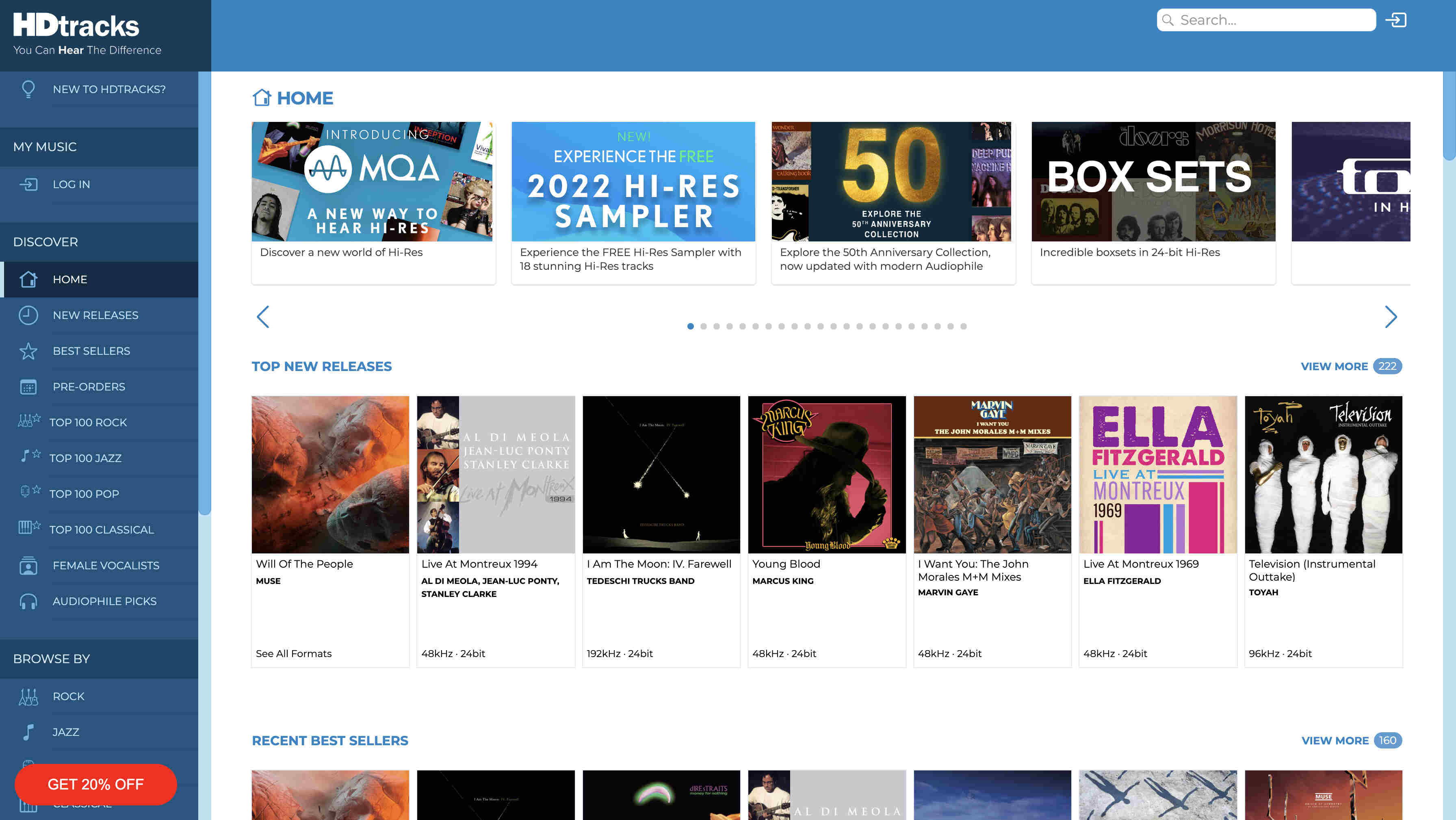

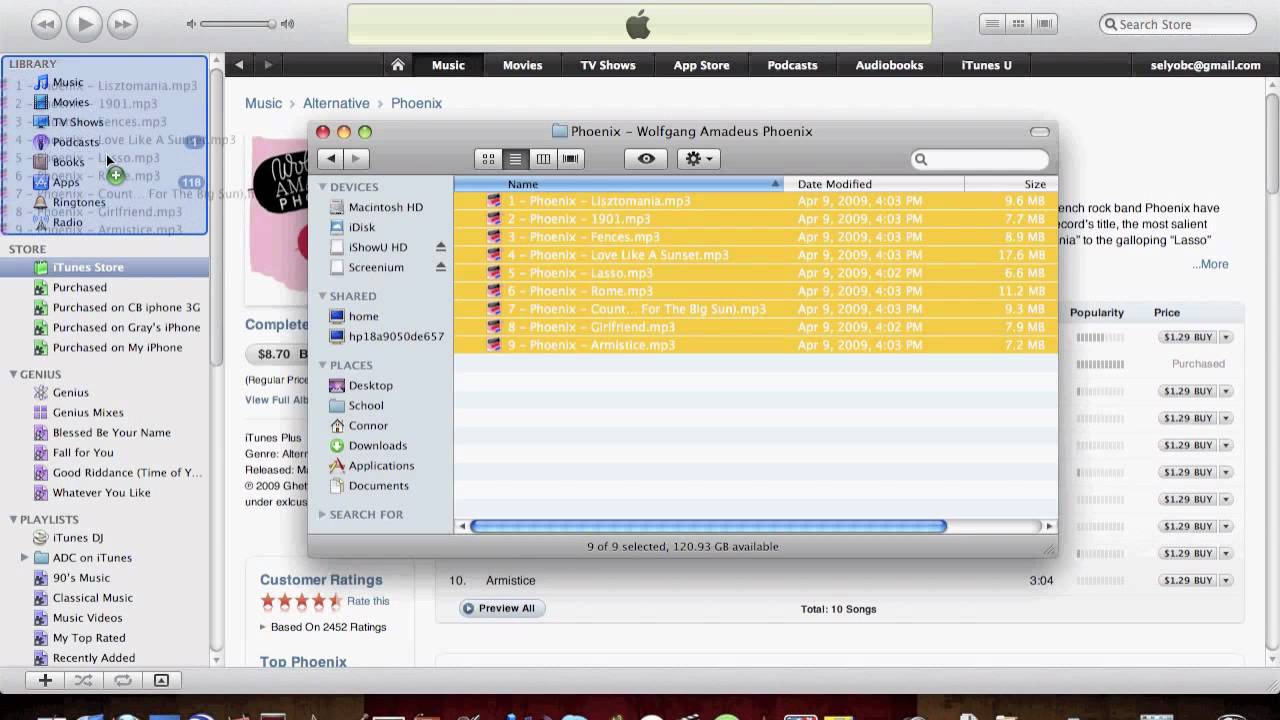

![How To Download Music Safe and Fast [GUIDE]](https://robots.net/wp-content/uploads/2022/04/how-to-download-music-featured-300x175.jpg)


